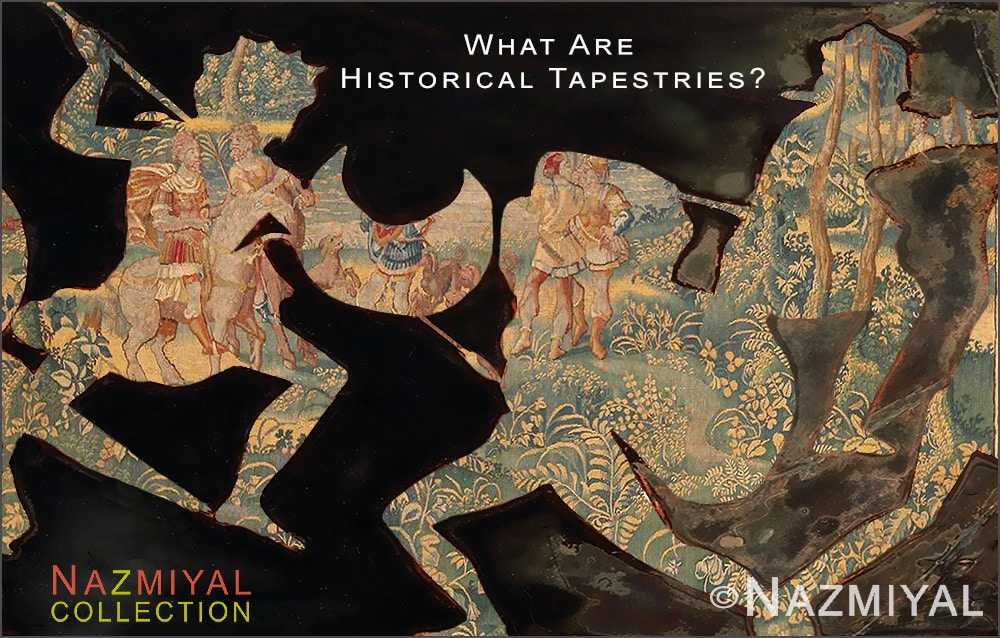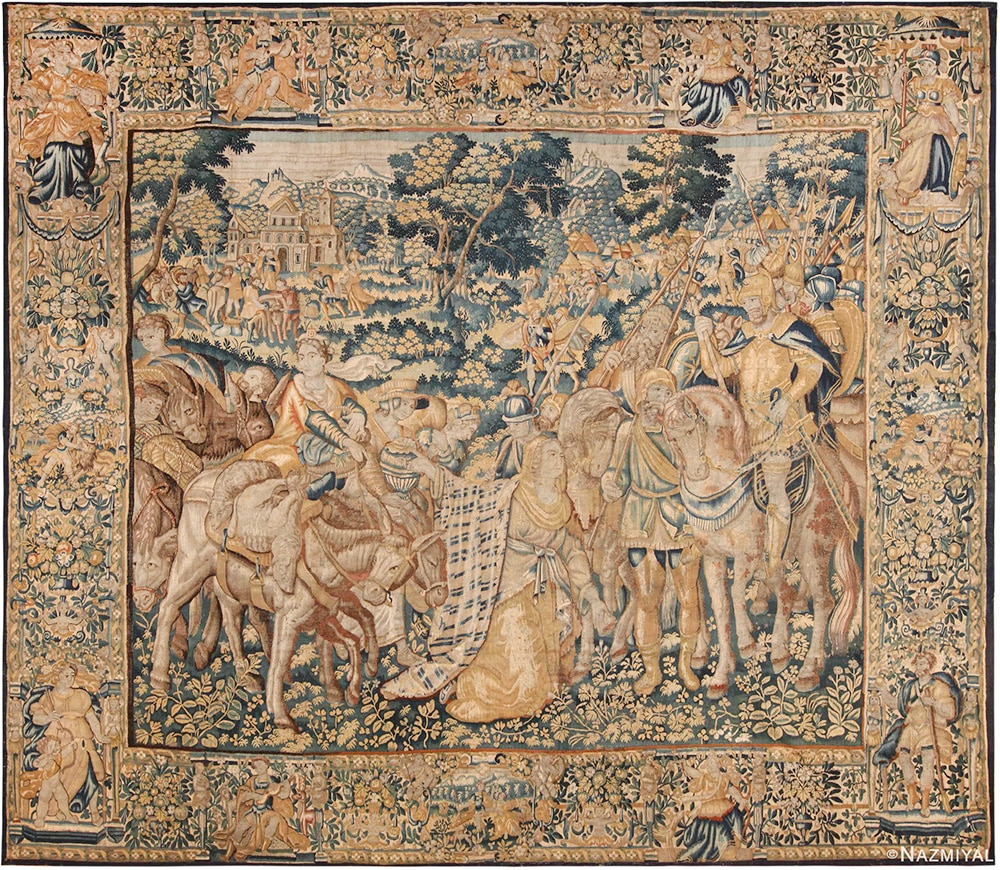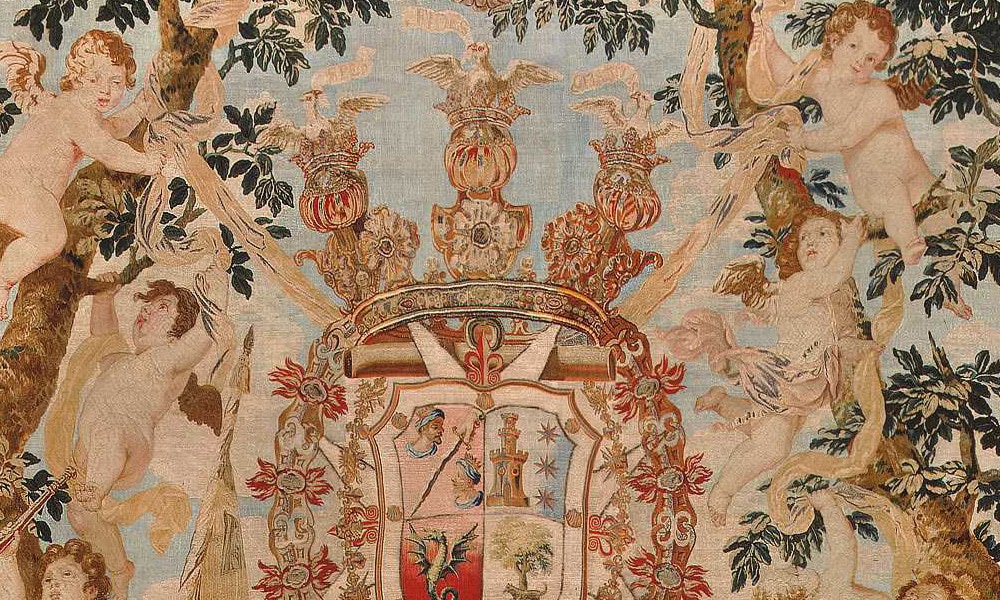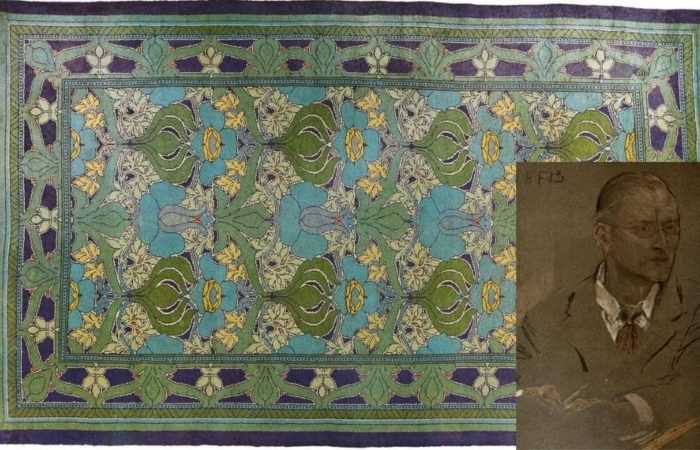Exploring Tapestries That Provide Historical Accounts And Records
Shop Our Beautiful Tapestry Collection | Learn How To Hang A Tapestry Or Rug On The Wall
You May Also Want To Review: How To Hand Historical Biblical Tapestries | Verdure Tapestries | Gobelin Tapestry History| Kesi: The History of the Chinese Tapestry | William Baumgarten and The Aubusson Tapestries | History of the Beauvais Tapestries | Barberini Tapestries Reborn from the Ashes | Green Tapestries Vogue 2017 Home Decor | Alighiero Boetti Tapestries
What Are Historical Tapestries and What Do They Depict?
The term “historical tapestries” refers to a type of woven textile art that depicts historical events, narratives or scenes. They are a form of textile art that combines intricate weaving techniques with pictorial and / or scenic representation. Historical tapestries are often large-scale and designed to be hung on walls, showcasing detailed and elaborate compositions.
Historical tapestries have been created throughout various periods of history, with notable examples originating from medieval and Renaissance periods. These iconic tapestries were typically commissioned by wealthy patrons, nobility, or religious institutions to commemorate significant events, celebrate important figures, illustrate historical narratives and / or depict biblical / religious scenes and themes. These tapestries served not only as decorative elements but also as means of storytelling and conveying cultural and political messages.

What Are Historical Tapestries?
The process of creating historical tapestries involved highly skilled weavers and designs. These highly skilled artisans would meticulously translate the design onto the weaving loom, selecting and blending vibrant colored threads to bring the images to life. Due to their labor-intensive nature, historical tapestries were considered valuable and prestigious art forms. Often, the tapestries would showcase the wealth and influence of the individuals or institutions associated with them.
Beyond their aesthetic appeal, historical tapestries also offer valuable insights into the history, customs and social contexts of the time periods they depict. Similar to historical photographs, tapestries provide visual documentation of clothing, architecture, landscapes and events that might otherwise be lost to history. As such, historical tapestries hold both artistic and historical significance, preserving cultural heritage and offering us a glimpse into the past.
What are some of the more famous / iconic historical tapestries?
There are several famous and iconic historical tapestries that have captivated audiences throughout history.
Here are a few notable examples of iconic historical tapestries:
- “The Bayeux Tapestry“: This extraordinary masterpiece is arguably one of the most famous historical tapestries in existence. Created in the 11th century, it depicts the events leading up to the Norman conquest of England, specifically the Battle of Hastings in 1066. The tapestry measures approximately 70 meters long and provides a detailed narrative through its embroidered scenes.
- “The Lady and the Unicorn”: This set of six tapestries, dating back to the late 15th century, is known for its exquisite artistry and mysterious symbolism. Currently displayed in the Cluny Museum in Paris, each tapestry features a lady and a unicorn in different settings, surrounded by various animals and intricate floral designs.
- “The Hunt of the Unicorn”: Also referred to as “The Unicorn Tapestries” this series of seven tapestries from the late 15th century is housed in the Cloisters museum in New York City. The tapestries depict the mythical hunt of a unicorn, symbolizing purity, and are renowned for their intricate details, rich colors, and symbolism.
- “The Apocalypse Tapestry”: Created in the 14th century, this monumental tapestry cycle is housed in the Château d’Angers in France. It consists of a series of woven panels that depict scenes from the Book of Revelation, showcasing apocalyptic imagery, biblical narratives, and complex iconography.
- “The Raphael Cartoons”: Although not strictly tapestries themselves, these designs by Italian artist Raphael served as cartoons (full-scale preparatory drawings) for tapestries commissioned by Pope Leo X in the early 16th century. The cartoons, now housed in the Victoria and Albert Museum in London, depict scenes from the lives of Saint Peter and Saint Paul and are considered masterpieces of Renaissance art.
These are just a few examples of the many famous historical tapestries that have captivated audiences over the centuries. Each tapestry offers a unique glimpse into the art, history, and cultural contexts of the time period in which it was created.

The Apocalypse Tapestry At Château d’Angers in France
(***For those who are interested in learning, many of these historical tapestries are referenced in our previous articles listed above)
This post that talks about what historical tapestries are was published by Nazmiyal Antique Rugs





